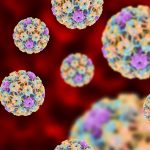Can Pollution Cause Weight Gain?
Mitch Kennedy, ND
Evidence is coming to light to add industrial toxins to the list of causes of obesity. Evidence implicating organotins, a class of persistent compounds containing at least one tin carbon bond, has been published recently. Researchers found both in vitro and in vivo evidence that exposure to a number of organotins at concentrations typically found in people and wildlife can contribute to alterations in pathways known to play a key role in excess weight gain, and can lead to significant aberrations in fat cells in mice and frogs.
Excess weight is strongly linked with many serious health problems, including heart disease, Type II diabetes, high blood pressure and some cancers. Prevention of obesity is by far the best available treatment. Preventing exposure to environmental contaminants over the course of a lifetime, even prior to conception, may be an important part of the battle if this and other recent papers hold up to scrutiny.
Growing evidence suggests that some endocrine disruptors (such as bisphenol A and nonylphenol) can play a role in weight gain; although others, such as genistein, can protect against weight gain. Organotins are widespread through their use in boat hull antifouling paints, pesticides, wood preservatives, textiles (as a biocidal agent), plastics and other products. Many studies have documented adverse health and environmental effects of organotins, from masculinization in some fish to hepatotoxicity in some mammals. Human exposure is largely through consumption of contaminated foods and contact with treated materials.
The researchers’ experiments showed that these chemicals disrupted the normal function of retinoid X receptor α, β and γ and/or peroxisome proliferator-activated receptor γ, all of which play key roles in fat cell differentiation.
These findings fit with other research showing that humans can be underweight at birth, but quickly become overweight later, possibly because their fat cell content or function is aberrant.
Even more important are the implications for how toxic chemicals are tested for safety. This study shows that the typical toxicology assessment based on structure-function relationships would not have predicted the observed effects of organotins, since organotin structures do not resemble those of other compounds that activate retinoid X receptors and peroxisome proliferators. According to Paul Cooke, a professor of reproductive biology at the University of Illinois at Urbana-Champaign, the results suggest that other chemicals that affect various hormone signaling pathways may play a similar role in weight gain.
Source: Environmental Health Perspectives 114(12):A692, 2006.
 Mitch Kennedy, ND has a family practice in Avon, CT, and is the first ND with clinical privileges at the University of Connecticut, a teaching hospital. Before graduation from Southwest College, Kennedy earned an international reputation as a leader in pollution prevention, showing industries around the world how preventing pollution saves money.
Mitch Kennedy, ND has a family practice in Avon, CT, and is the first ND with clinical privileges at the University of Connecticut, a teaching hospital. Before graduation from Southwest College, Kennedy earned an international reputation as a leader in pollution prevention, showing industries around the world how preventing pollution saves money.









